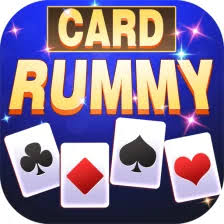Card rummy, a game enjoyed by millions around the world, blends strategy, skill, and a bit of luck. This classic card game has evolved over the years, yet it retains its fundamental charm. Whether played casually among friends or competitively in tournaments, rummy offers a rich gaming experience that captivates players of all ages. This article explores the history, rules, variants, and strategies of card rummy, providing a comprehensive guide to mastering the game.
The Origins of Card Rummy
The exact origins of rummy are somewhat debated, but it is widely believed to have evolved from a Mexican card game called Conquian, which dates back to the 19th century. Over time, rummy spread across the globe, giving rise to numerous regional variations. The game’s enduring popularity is a testament to its engaging gameplay and the skill required to excel.
Basic Rules of Card Rummy
The primary objective in rummy is to arrange all the cards in your hand into valid sets and sequences. The game can be played by 2 to 6 players, using one or two standard decks of 52 cards, plus jokers.
Key Terminology:
- Meld: A combination of cards, either a set or a sequence.
- Set: Three or four cards of the same rank but different suits (e.g., 7♠ 7♦ 7♣).
- Sequence: Three or more consecutive cards of the same suit (e.g., 5♠ 6♠ 7♠).
- Pure Sequence: A sequence without any joker.
- Impure Sequence: A sequence that includes one or more jokers.
- Joker: A card that can substitute for any other card to form a set or sequence.
Gameplay:
- Dealing: Each player is dealt a specific number of cards (13 in the standard version). The remaining cards form the draw pile, with the top card placed face-up to start the discard pile.
- Drawing and Discarding: Players take turns drawing a card from either the draw pile or discard pile and then discarding one card.
- Forming Melds: Players aim to form sets and sequences with the cards in their hand.
- Declaring: Once a player has formed the necessary melds, they can declare their hand. The game then proceeds to the validation of the declaration.
Winning the Game
To win, a player must:
- Form at Least Two Sequences: One of these must be a pure sequence.
- Complete Their Hand: The remaining cards should form valid sets or sequences.
- Declare: The player declares their hand and places their cards face-up for validation. If the declaration is valid, they win the game.
Popular Variants of Card Rummy
- Gin Rummy: Played with 2 players, each dealt 10 cards. Players aim to form sets and runs, with gameplay focusing on reducing deadwood (unmatched cards).
- Indian Rummy: Usually played with 13 cards and two decks, including jokers. It emphasizes forming at least two sequences, one of which must be pure.
- Kalooki: A version of rummy played with 9 or 11 cards, where players can “meld” sets and sequences during their turn.
- 500 Rummy: A point-based game where players aim to score 500 points by forming sets and sequences.
Strategies for Success in Card Rummy
- Form a Pure Sequence Early: Prioritize creating a pure sequence, as it is essential for a valid declaration.
- Track Discards: Pay attention to the cards your opponents pick and discard. This helps in predicting their moves and adjusting your strategy.
- Use Jokers Wisely: Save jokers for completing higher-value sets and sequences.
- Discard High-Value Cards: Minimize your points by discarding high-value cards that don’t contribute to any melds.
- Maintain Flexibility: Keep your options open by holding onto cards that can form multiple melds.
Conclusion
Card rummy is more than just a game of chance; it is a test of skill, strategy, and mental acuity. Its timeless appeal lies in its simplicity and depth, offering endless possibilities for players to refine their strategies and improve their gameplay. Whether you are playing a friendly game at home or competing in a high-stakes tournament, rummy provides a rewarding and enjoyable experience. Embrace the challenge, master the rules, and discover the enduring allure of card rummy.





